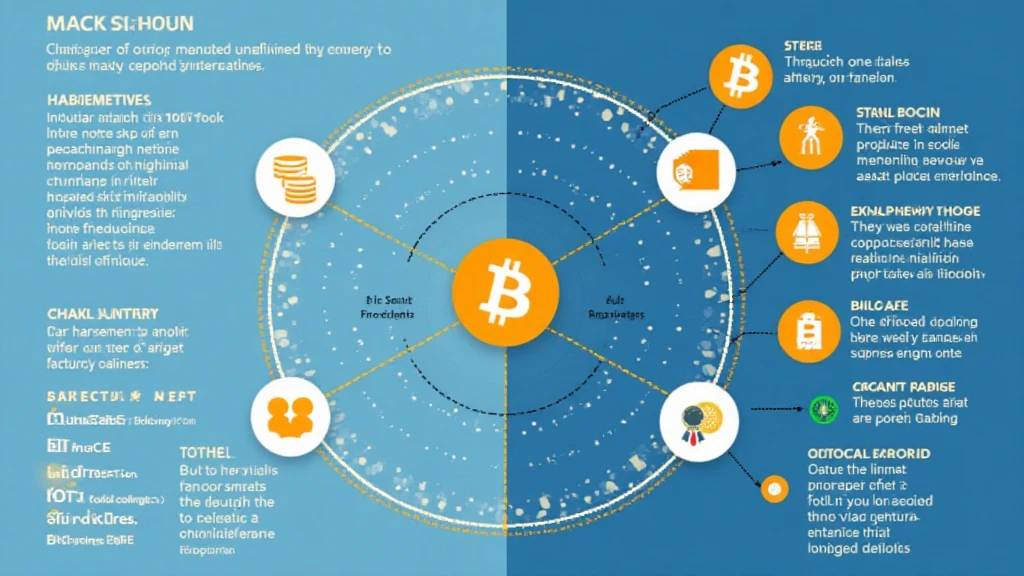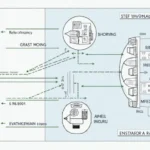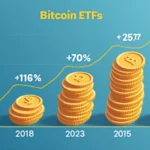Bitcoin Blockchain Interoperability: Bridging the Gap in 2025
With over $4.1 billion lost to decentralized finance (DeFi) hacks in 2024, it’s clear that the need for robust security measures and interoperability across different blockchains has never been greater. As the blockchain ecosystem evolves, achieving seamless interoperability between Bitcoin and other blockchain networks is paramount for enhancing security, efficiency, and user experience. In this article, we will explore the current landscape of Bitcoin blockchain interoperability, its significance, various challenges, and the potential solutions that could redefine the future of digital assets.
Understanding Bitcoin’s Position in the Blockchain Ecosystem
Bitcoin, often considered the pioneer of blockchain technology, holds a unique position in the cryptocurrency landscape. As the first decentralized digital currency, Bitcoin introduced the world to blockchain technology, enabling secure peer-to-peer transactions without the need for intermediaries.
In 2025, Bitcoin is not just a digital asset; it serves as a benchmark for many other cryptocurrencies. However, its isolation from other blockchain networks raises questions about scalability and functionality. To put it simply, Bitcoin operates in a silo, which can limit its potential.

Like a bank vault for digital assets, Bitcoin’s blockchain is secure but can be restrictive. Users want digital currencies that can interact and transact with one another seamlessly, creating a more versatile digital finance ecosystem.
Challenges of Bitcoin Blockchain Interoperability
The path to achieving interoperability between Bitcoin and other blockchains is laden with challenges. Here are some of the primary obstacles:
- Technical Variations: Different blockchains utilize varying consensus mechanisms, protocols, and data structures, complicating interoperability.
- Scalability Issues: Bitcoin’s network can become congested, especially during peak transaction times, affecting the speed and cost of transactions.
- Security Concerns: Bridging Bitcoin with other networks raises potential security vulnerabilities that could be exploited in cross-chain transactions.
- Regulatory Challenges: Different jurisdictions impose diverse regulations, complicating the legal landscape surrounding cross-chain interactions.
Solutions for Enhanced Bitcoin Blockchain Interoperability
Despite these challenges, several innovative solutions are emerging that could pave the way for improved interoperability:
- Atomic Swaps: This technology allows users to exchange cryptocurrencies between different blockchains without intermediaries, enabling direct transactions.
- Wrapped Bitcoin (WBTC): A tokenized version of Bitcoin that operates on the Ethereum network, allowing Bitcoin to participate in Ethereum‘s DeFi ecosystem.
- Cross-Chain Protocols: Solutions like Polkadot and Cosmos aim to create a framework for blockchains to communicate and share data securely.
- Decentralized Finance (DeFi) Bridges: Protocols designed to facilitate the transfer of assets between various blockchains in a secure manner.
The Role of the Vietnamese Market in Blockchain Interoperability
As blockchain technology progresses, emerging markets like Vietnam are witnessing exponential growth in cryptocurrency use. With over 5 million crypto users as of 2025, the Vietnamese market presents a fertile ground for innovations in blockchain interoperability.
The rise of DeFi in Vietnam indicates that users are keen on exploring options beyond Bitcoin, seeking interconnectivity among multiple assets. As local exchanges adapt to the prevalent demand for diverse offerings, the need for effective interoperability solutions becomes even more critical.
Key Statistics about Vietnam’s Cryptocurrency Growth
Here are some key stats highlighting the cryptocurrency market in Vietnam:
| Year | Active Crypto Users | Market Growth Rate |
|---|---|---|
| 2021 | 1 million | 200% |
| 2022 | 3 million | 300% |
| 2025 | 5 million | 150% |
Future Directions for Bitcoin Blockchain Interoperability
The future of Bitcoin blockchain interoperability is promising but requires significant innovations and industry collaboration. Here are several future directions to consider:
- Increased Collaboration: Cross-industry partnerships between projects, developers, and regulatory authorities will be crucial to enhancing interoperability.
- Standardization Efforts: Developing universal standards for cross-chain interactions can facilitate smoother transactions and collaborations.
- Technological Advancements: Innovations in scalable solutions can significantly boost the execution capabilities of Bitcoin’s blockchain.
- Education and Awareness: As the market matures, educating users about interoperability tools and solutions will be essential.
Conclusion
In conclusion, Bitcoin blockchain interoperability plays a vital role in shaping the future of digital assets. As it stands, the challenges are vast, but the potential for innovative solutions is even greater. Emphasizing collaboration, technological advancement, and user education will be key to overcoming existing obstacles.
As the Vietnamese market continues to grow and embrace cryptocurrencies, the push for improved interoperability will only intensify. By harnessing the power of Bitcoin and fostering connections with other blockchains, we can unlock a new era of digital finance that is secure, efficient, and accessible for everyone.
Not financial advice. Consult local regulators.
Author: Dr. Nguyen Van A, a blockchain technology expert and consultant with over 15 published papers on decentralized finance and interoperability solutions, and has led audits for several well-known projects in the blockchain space.




